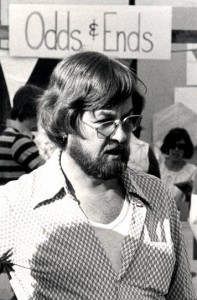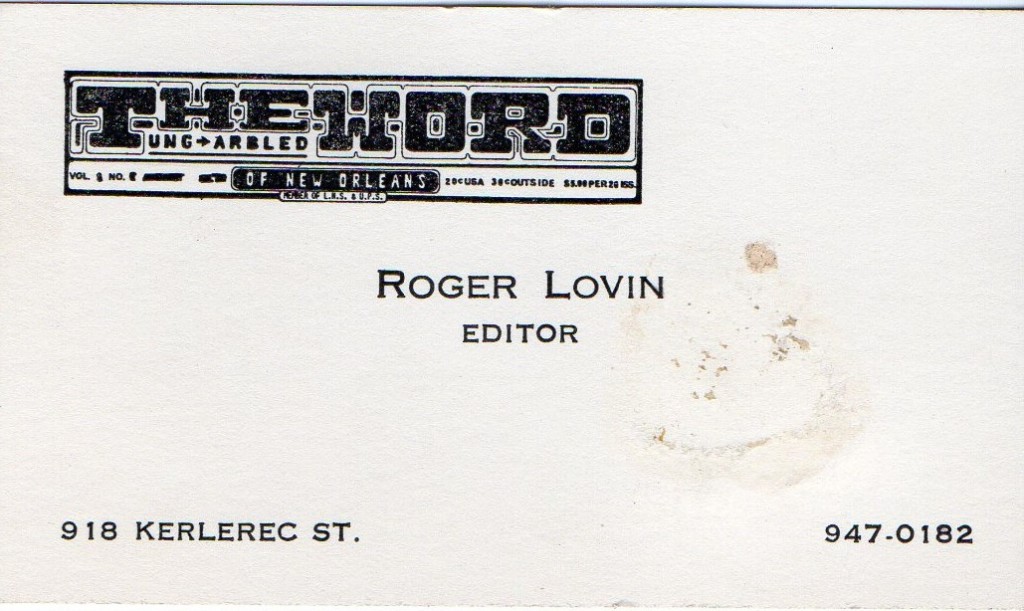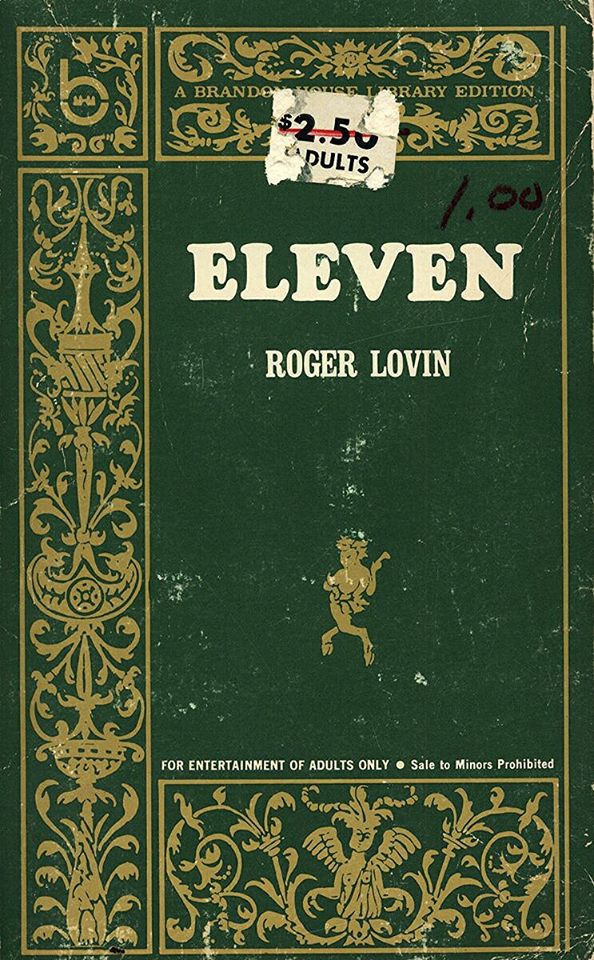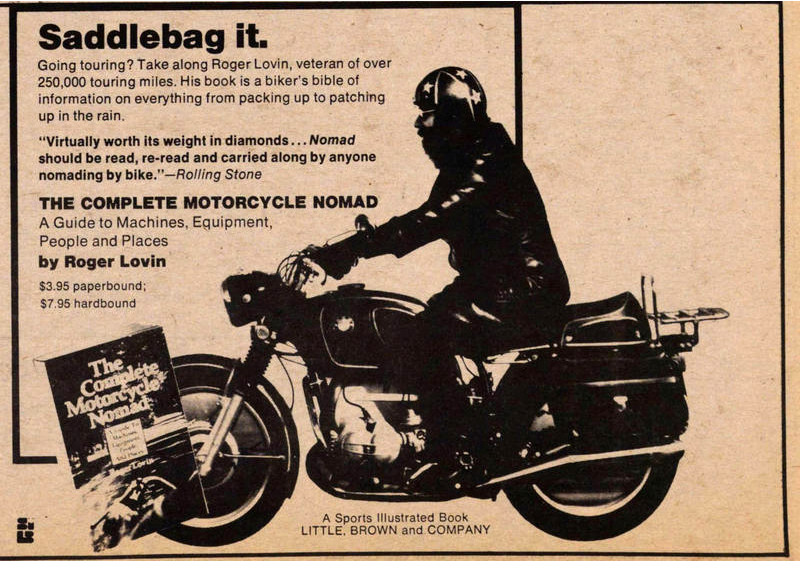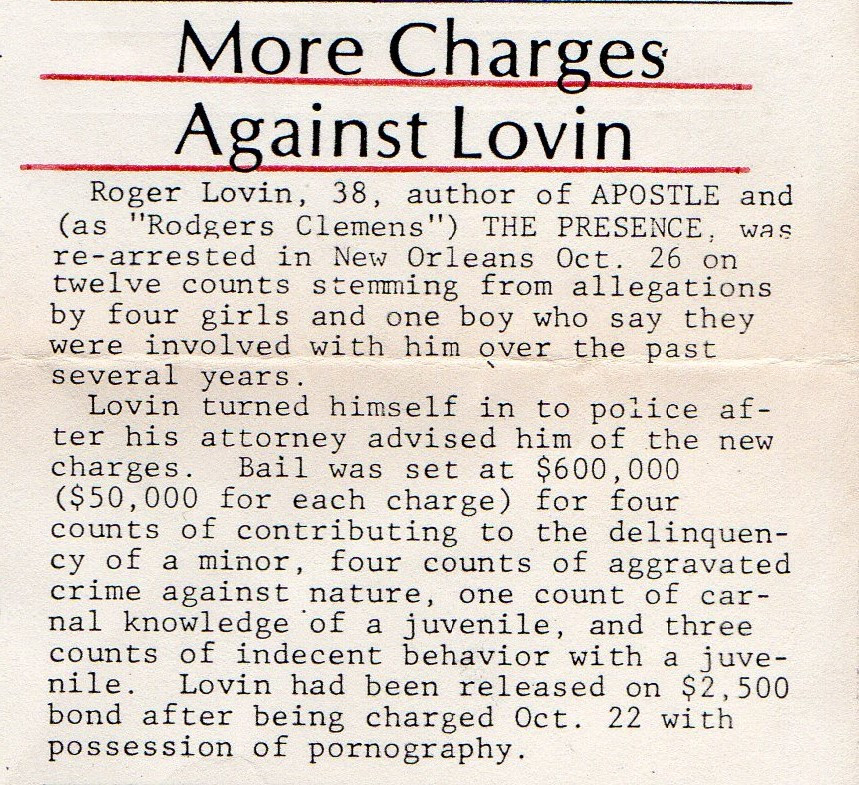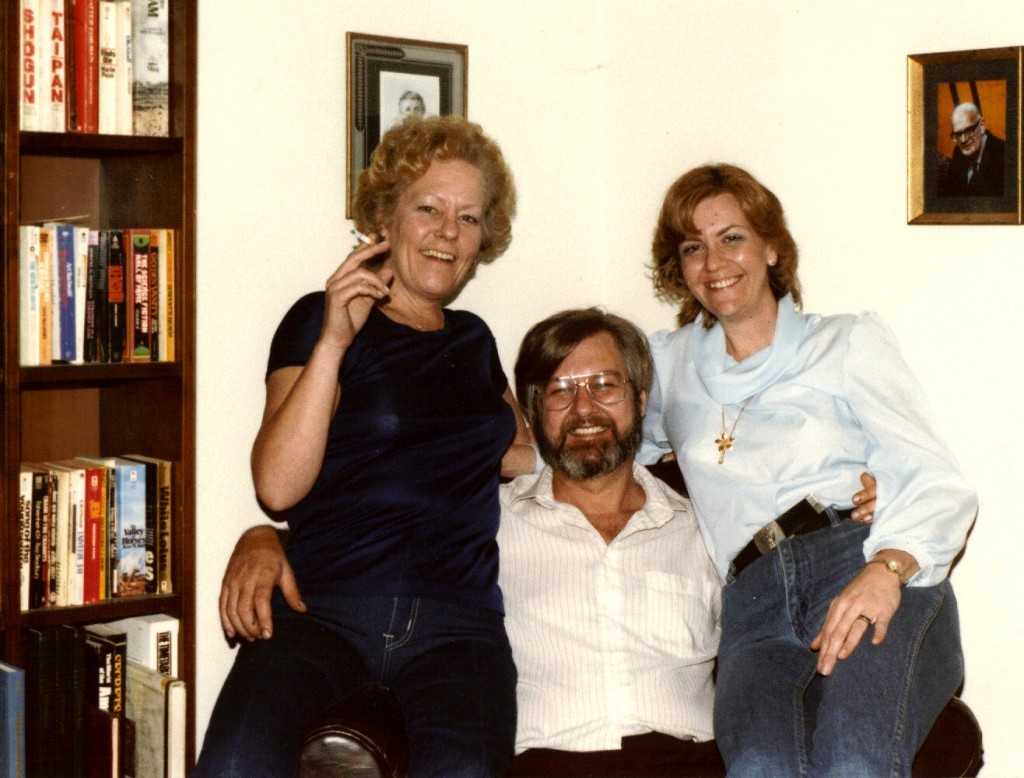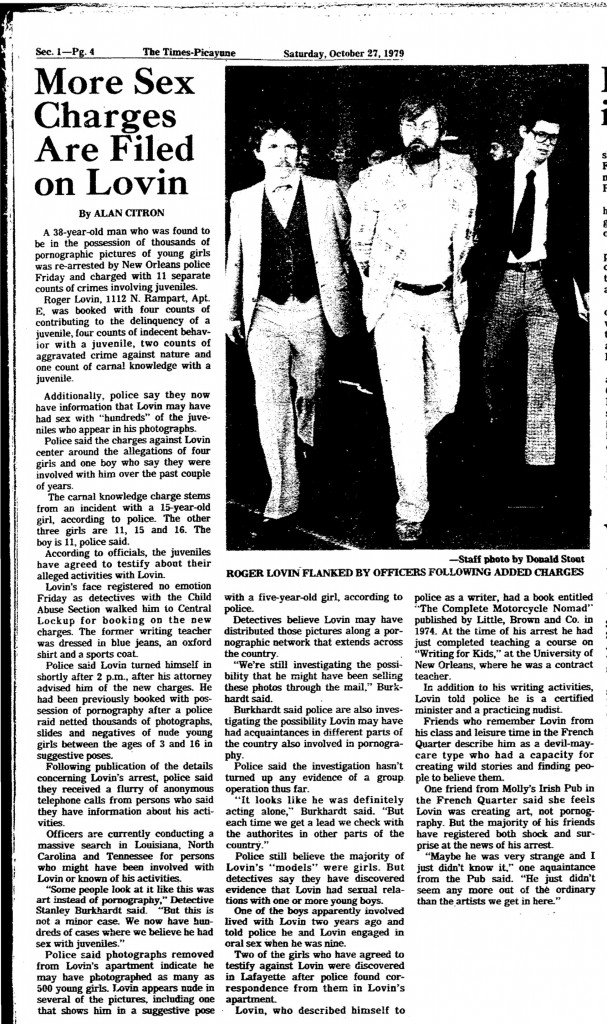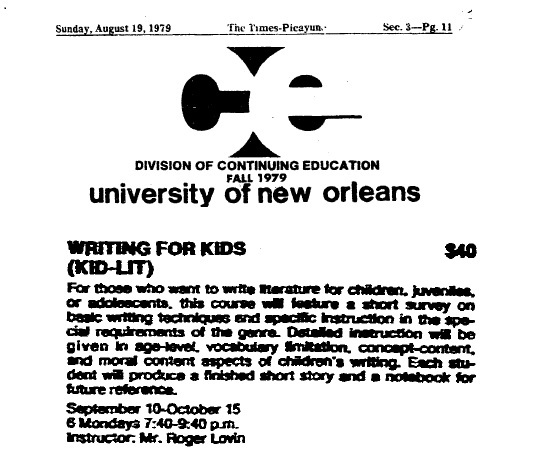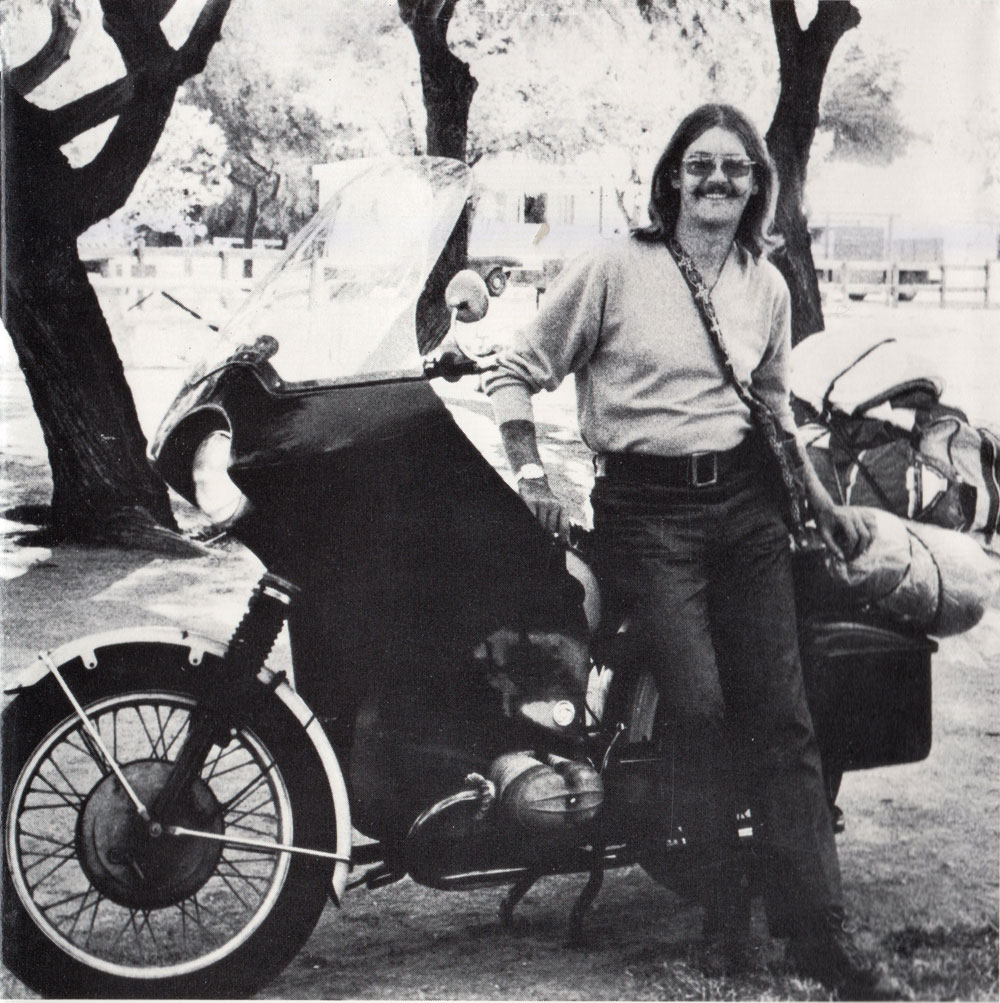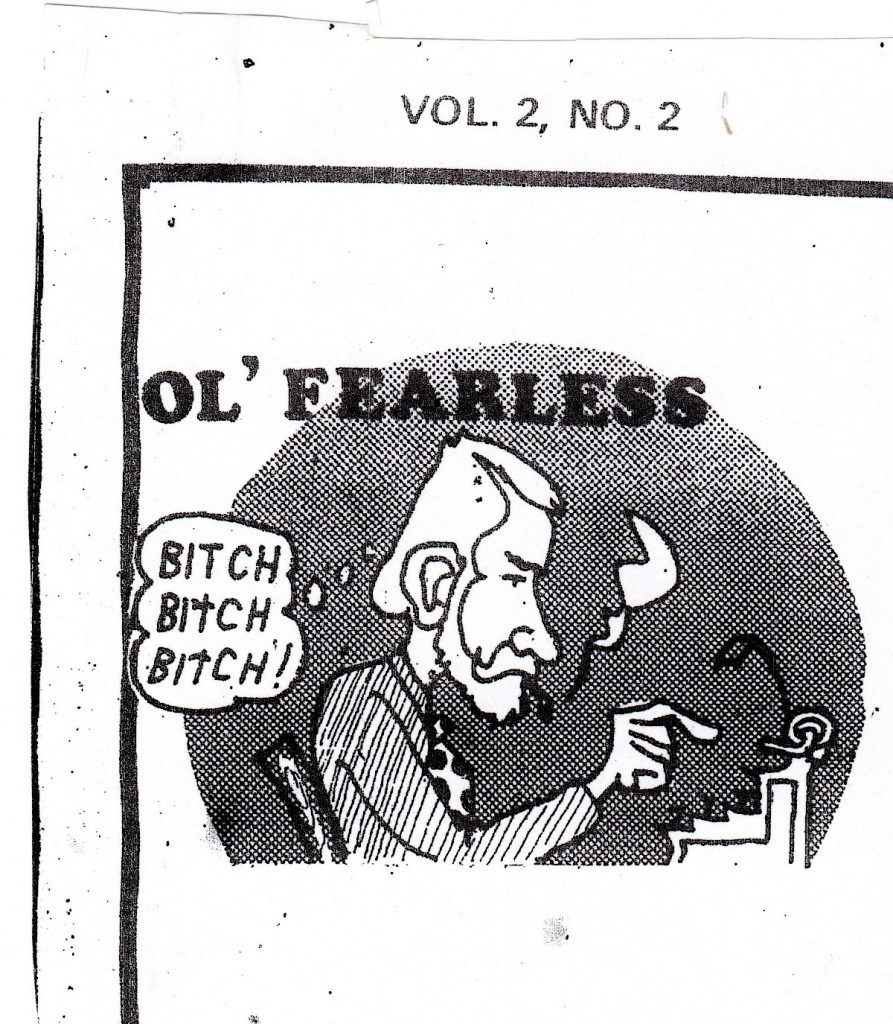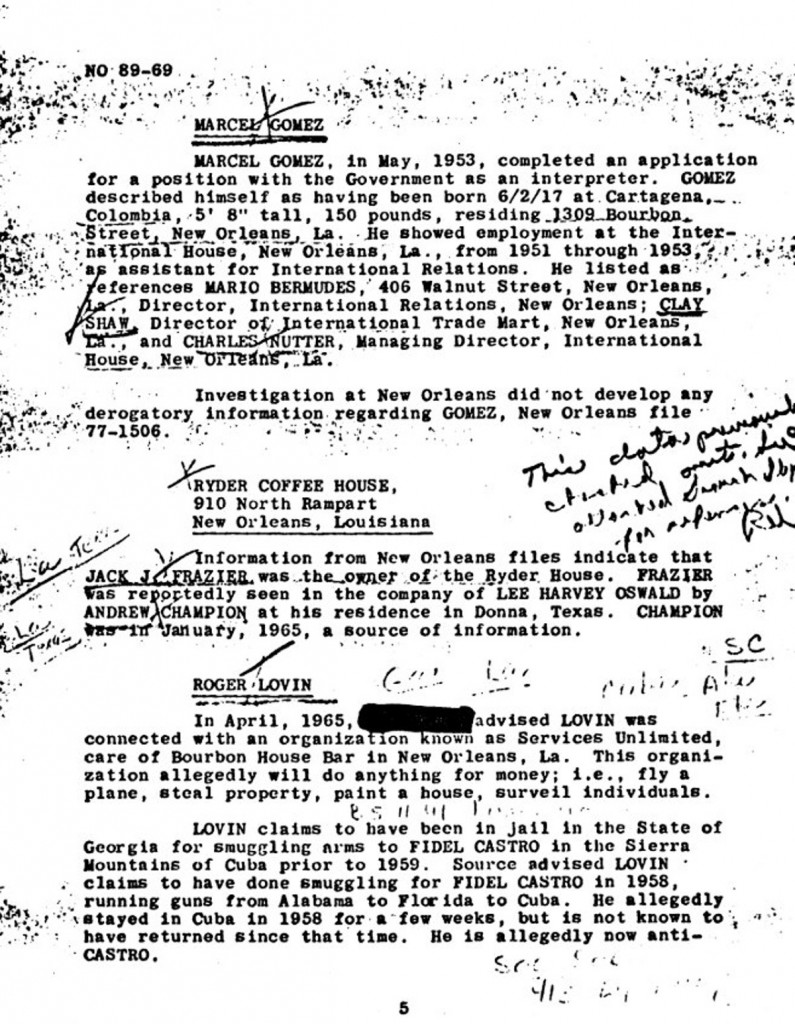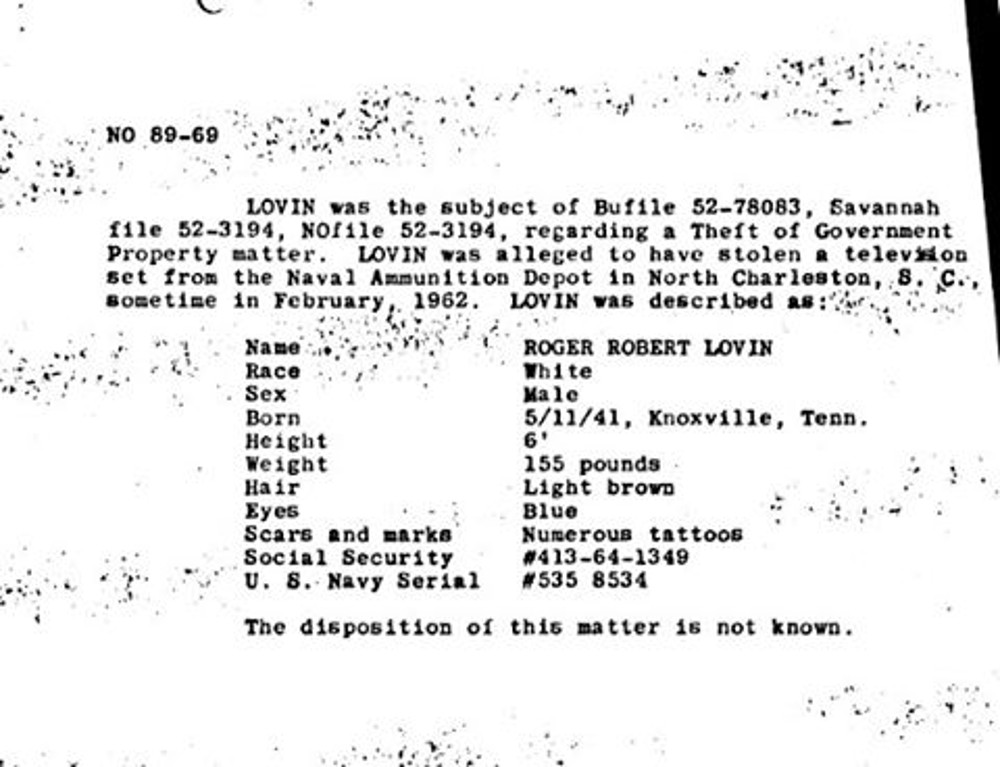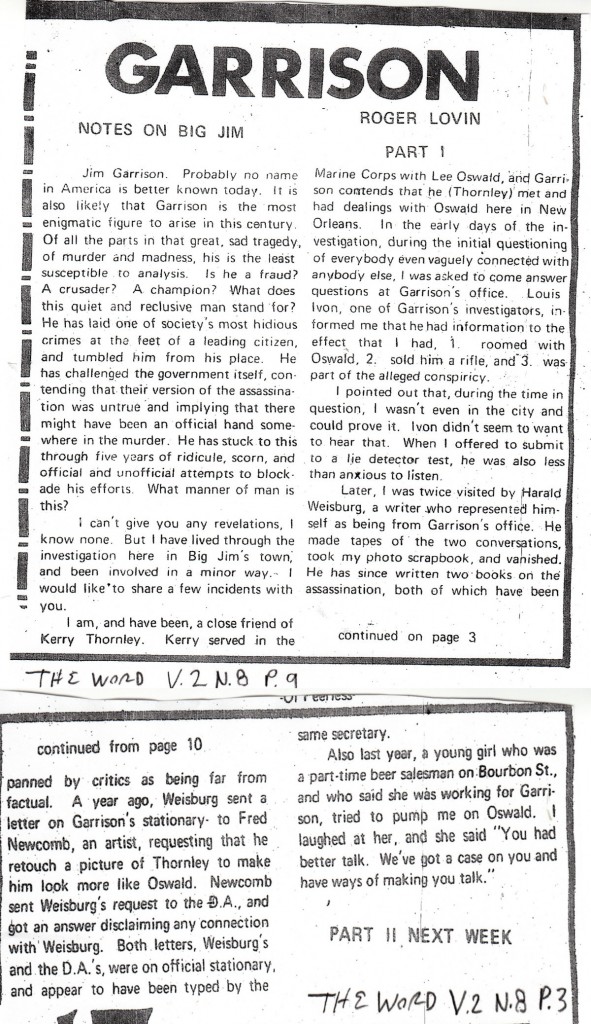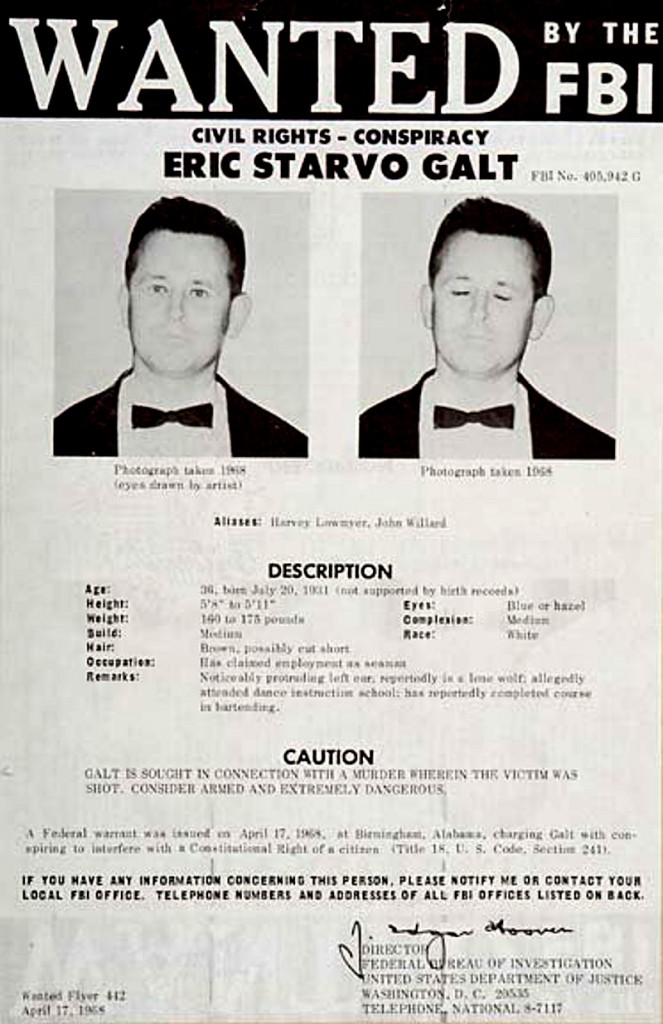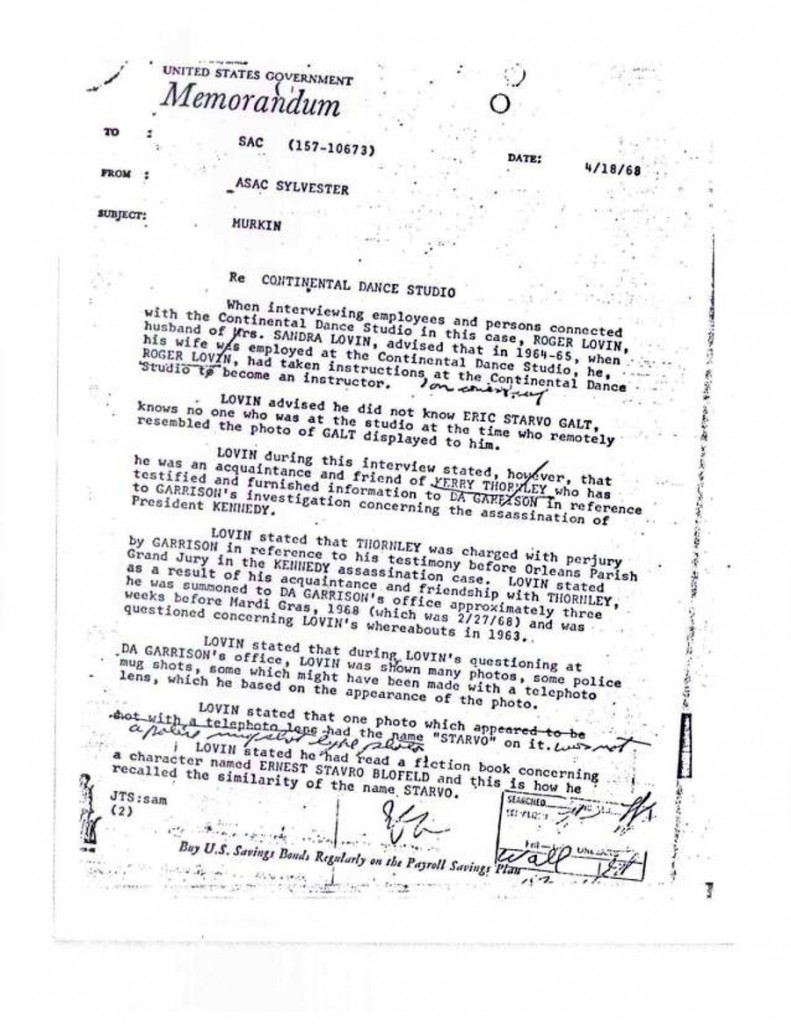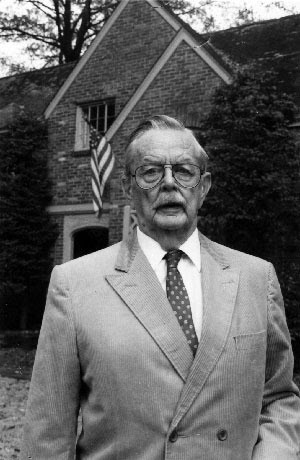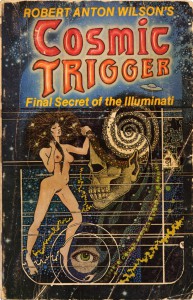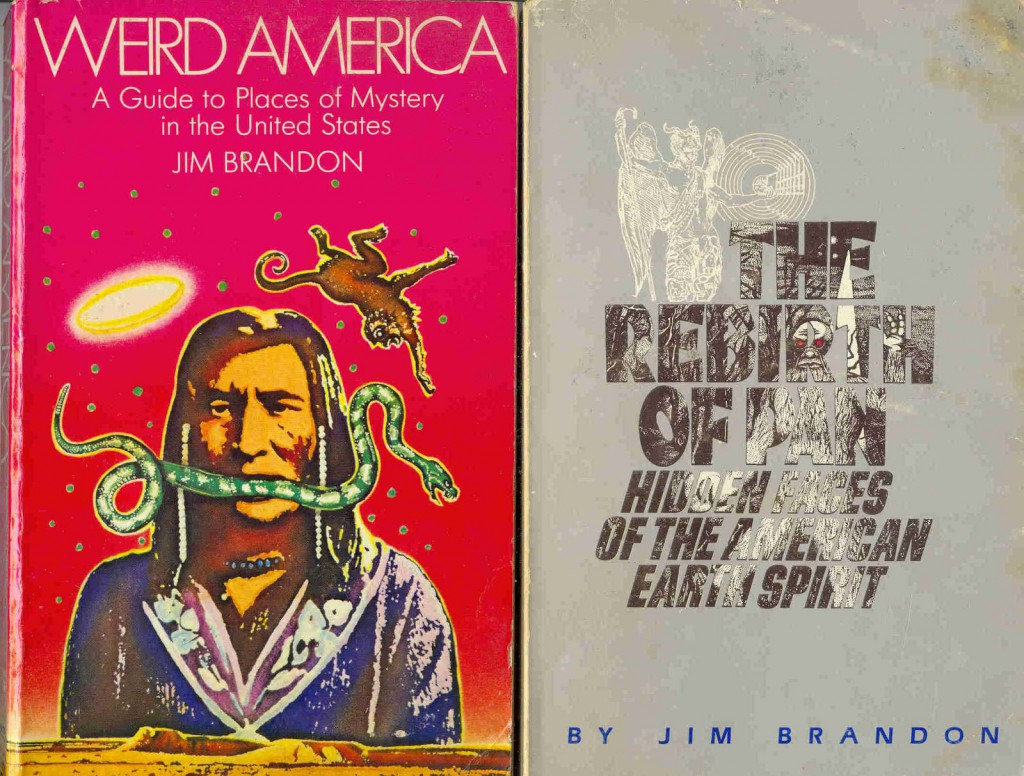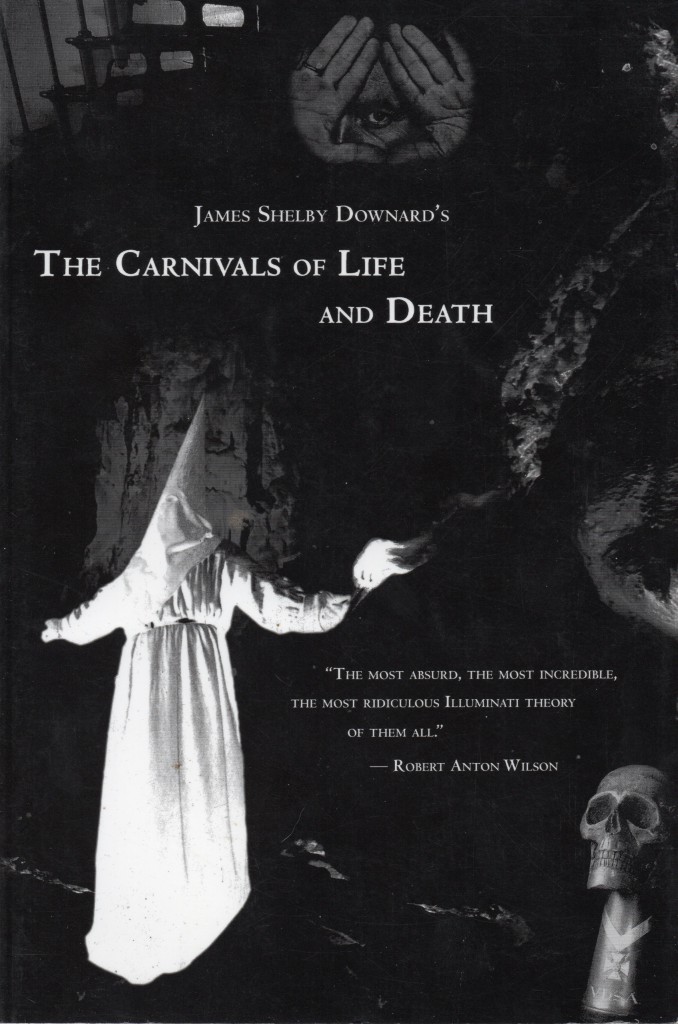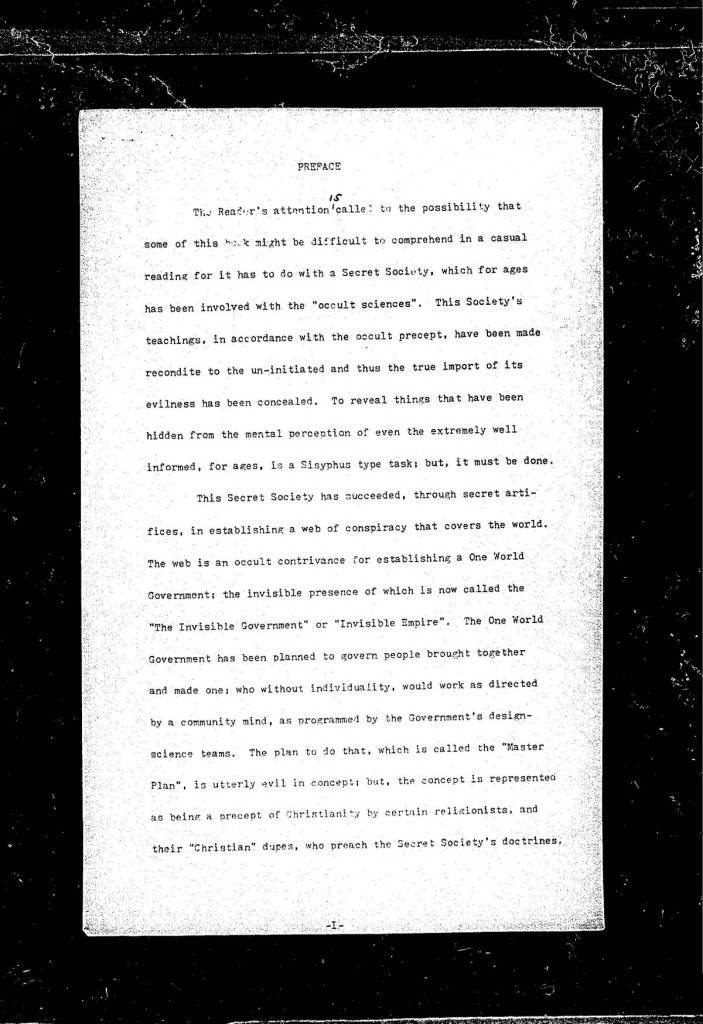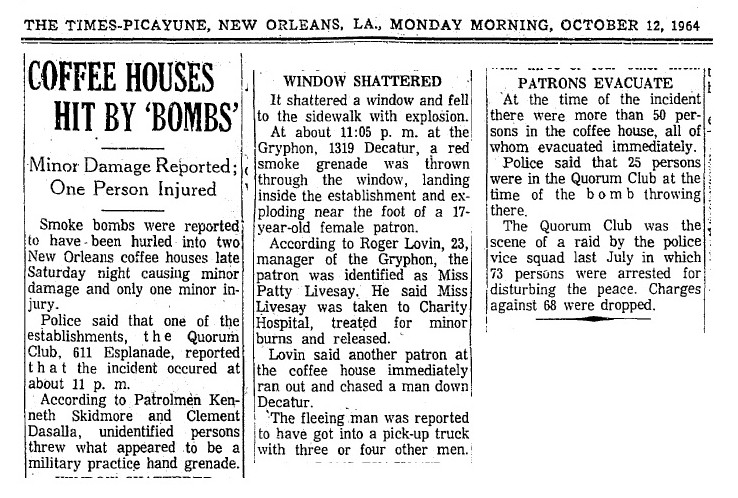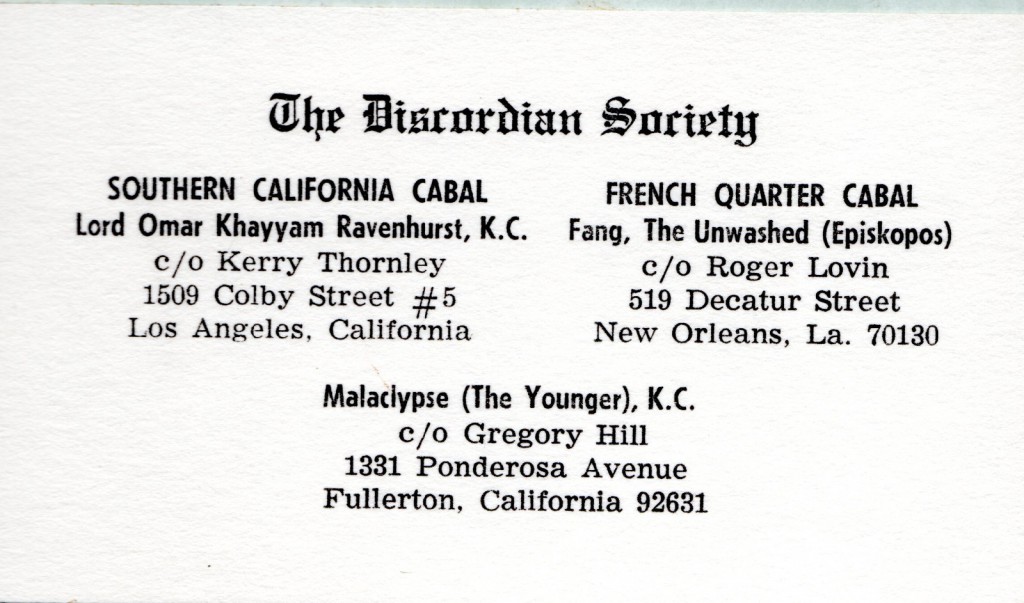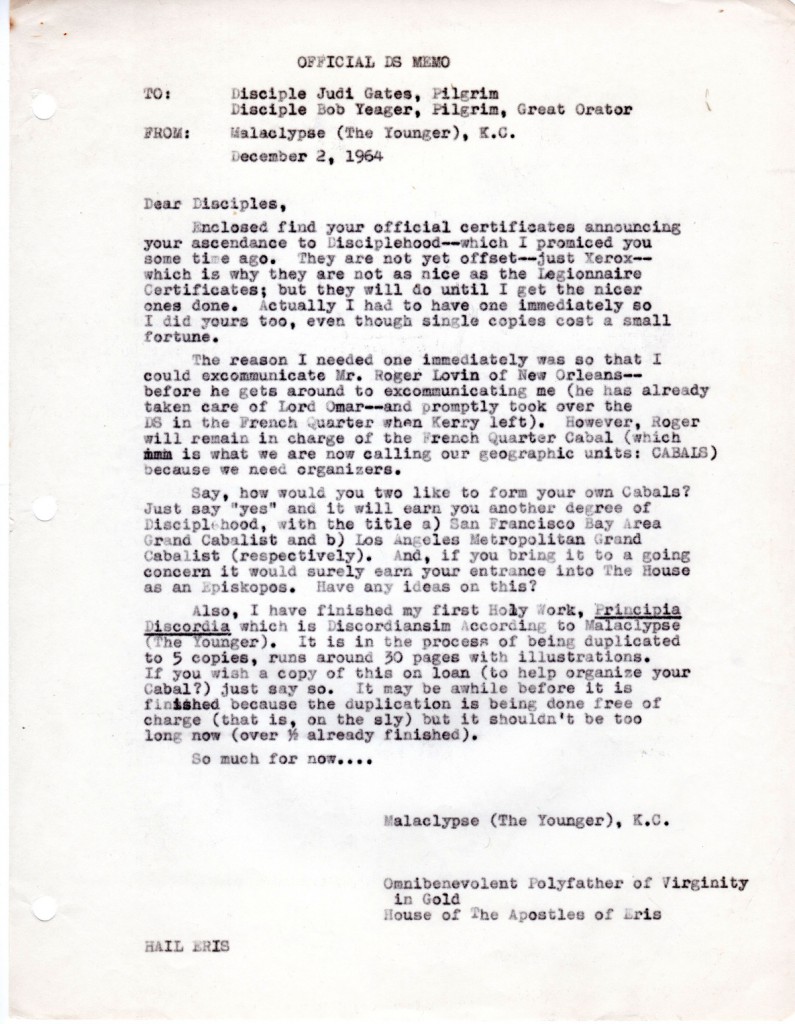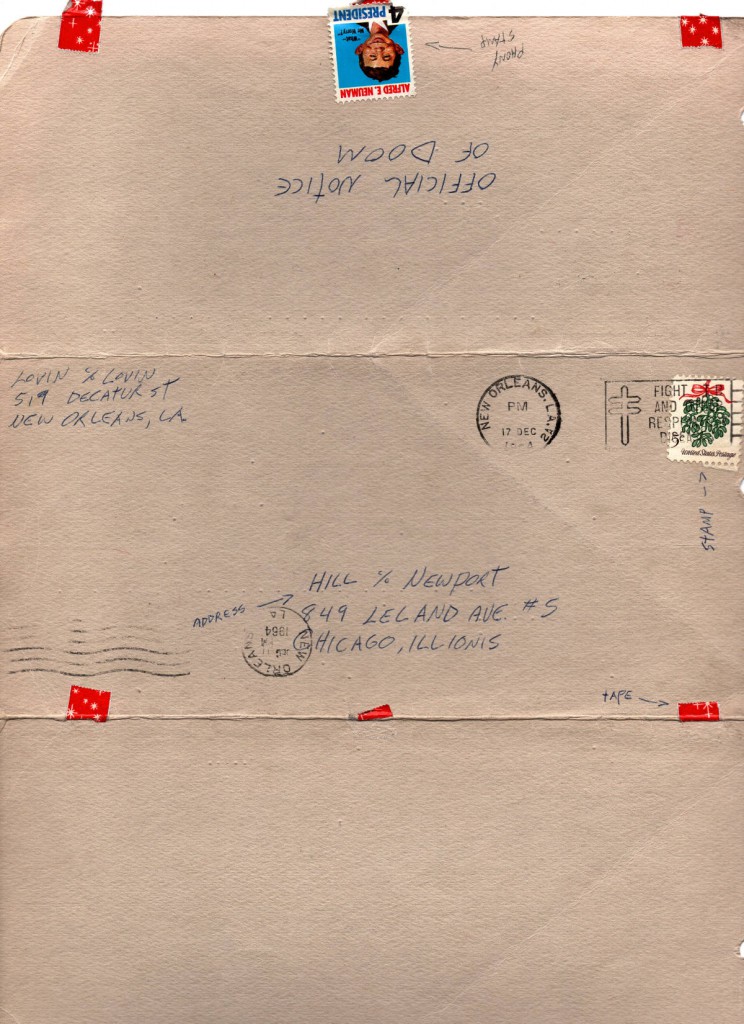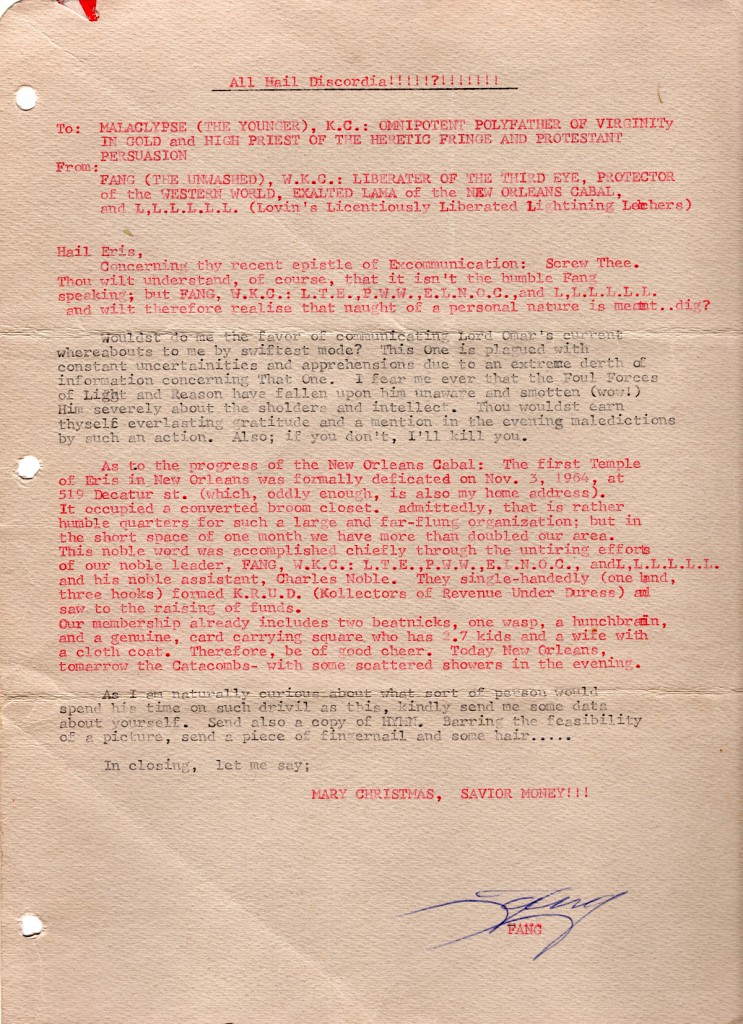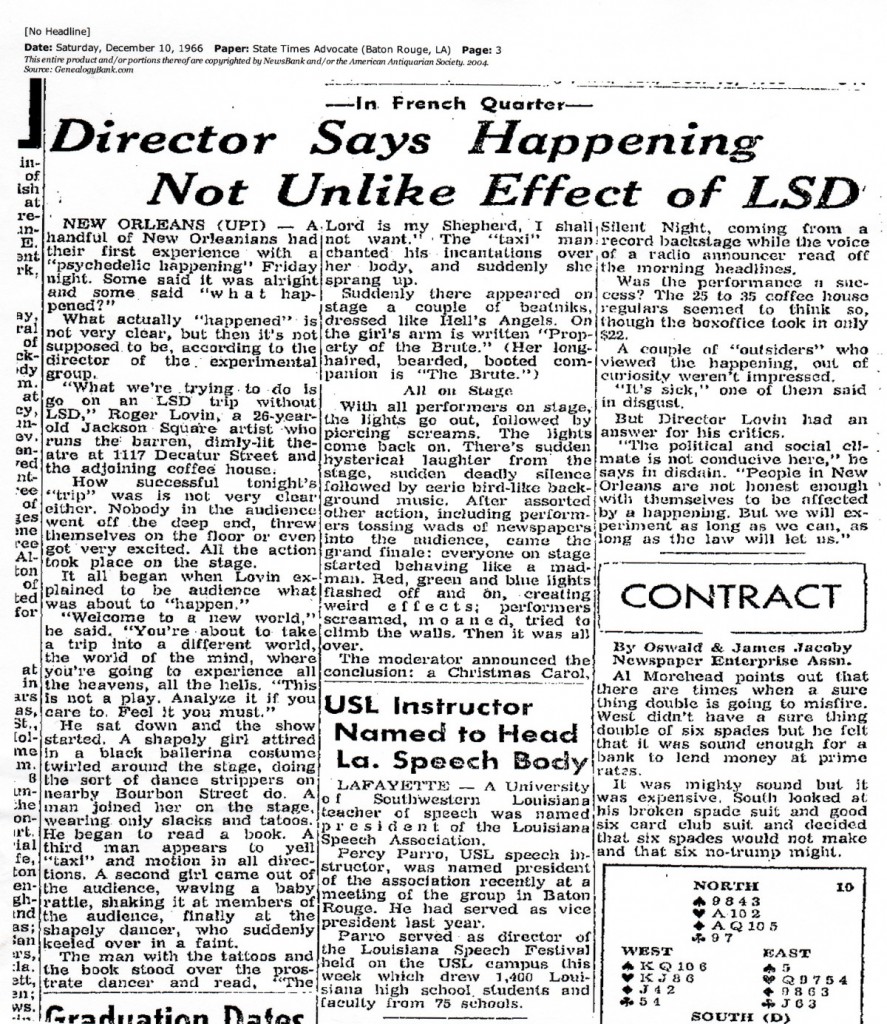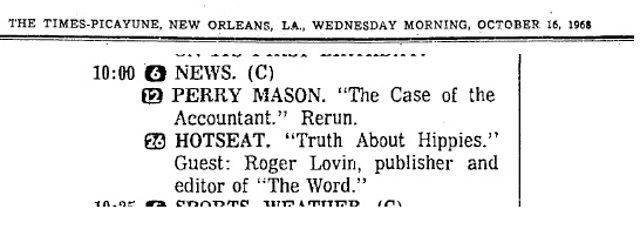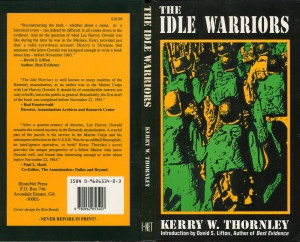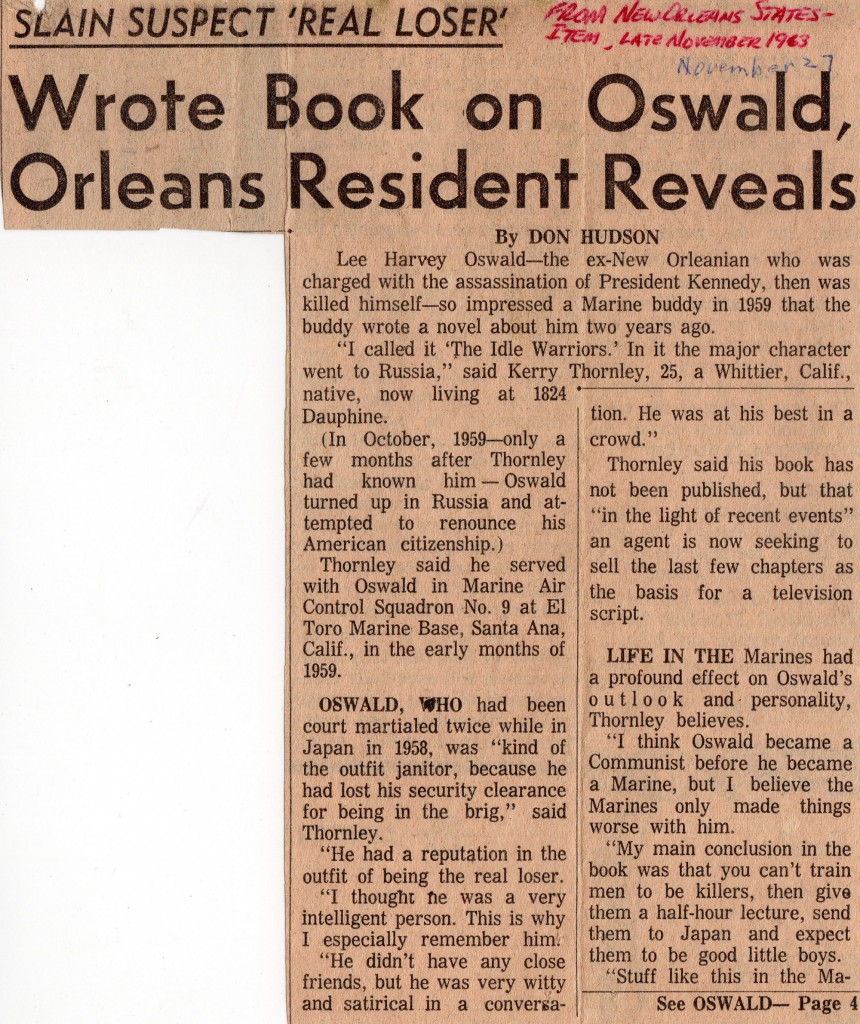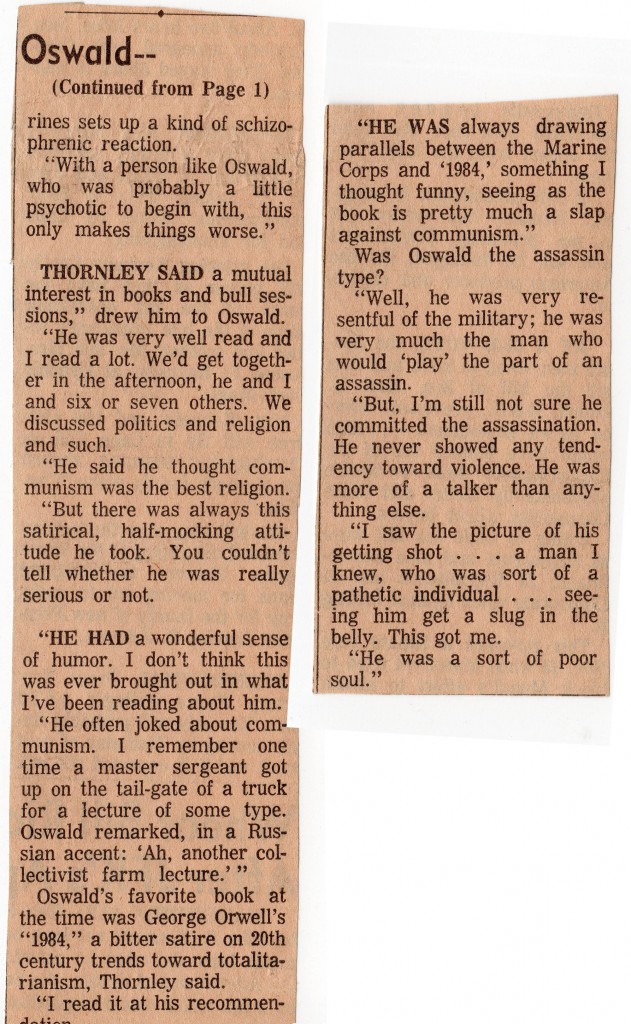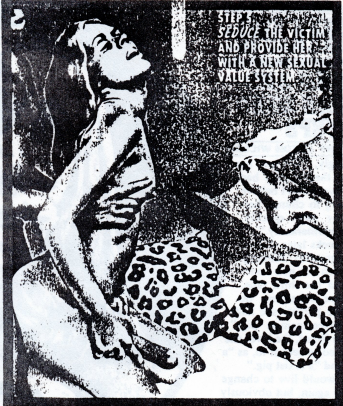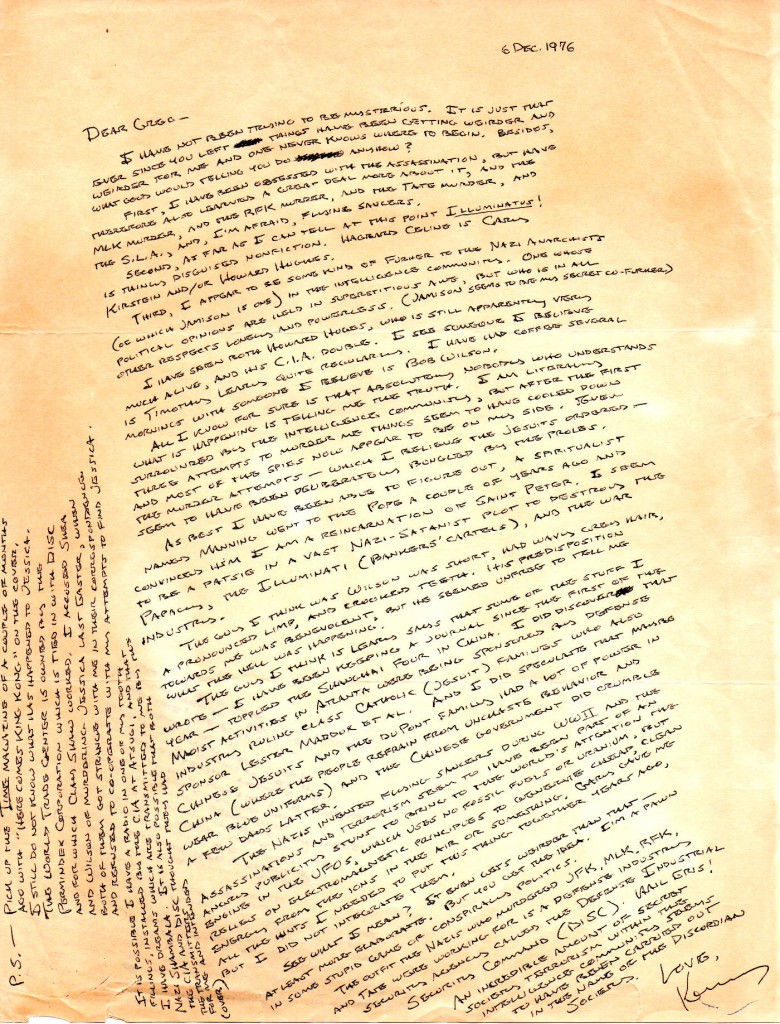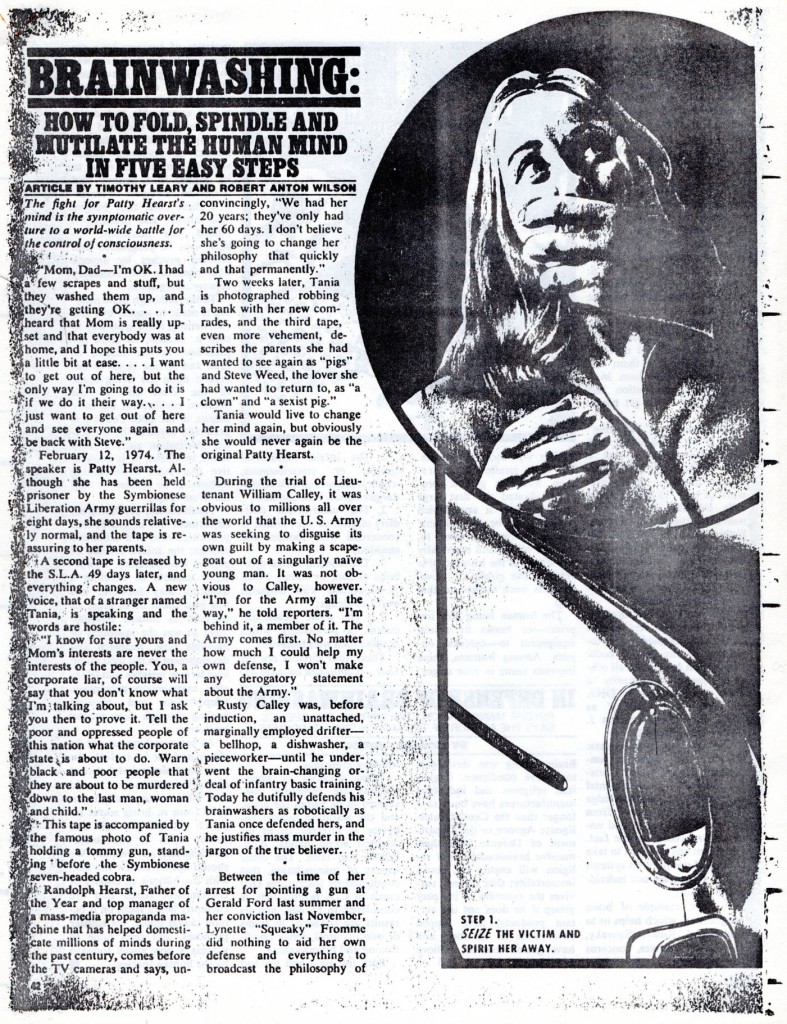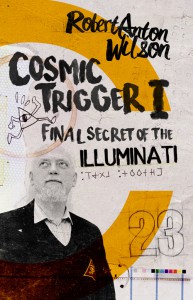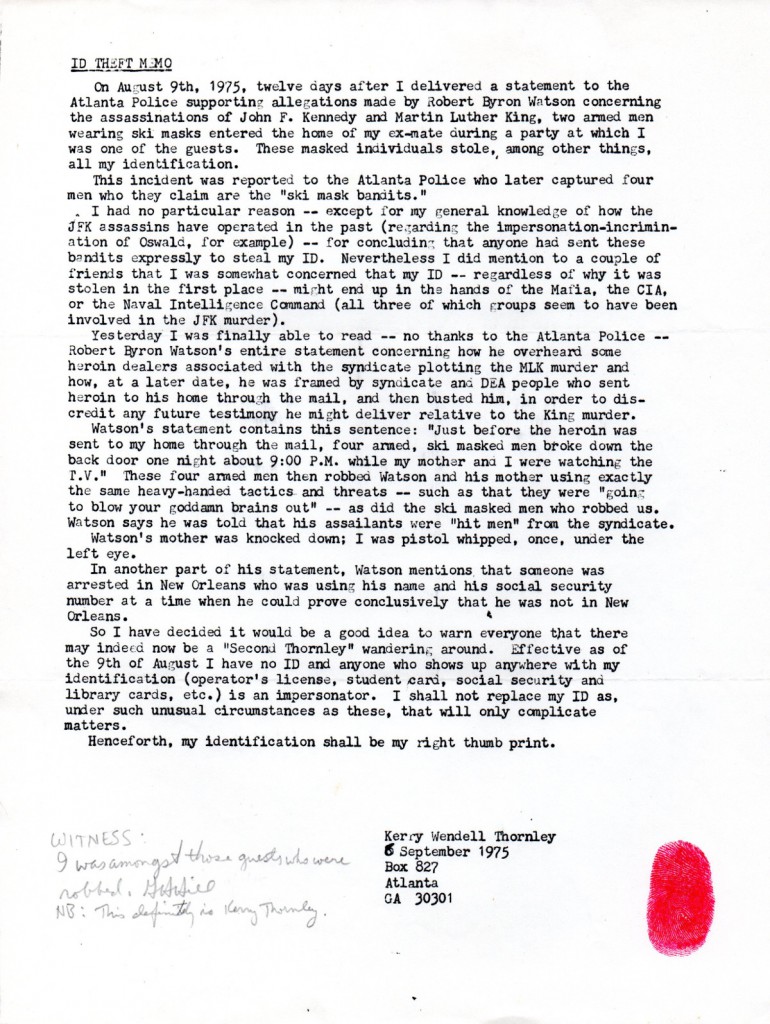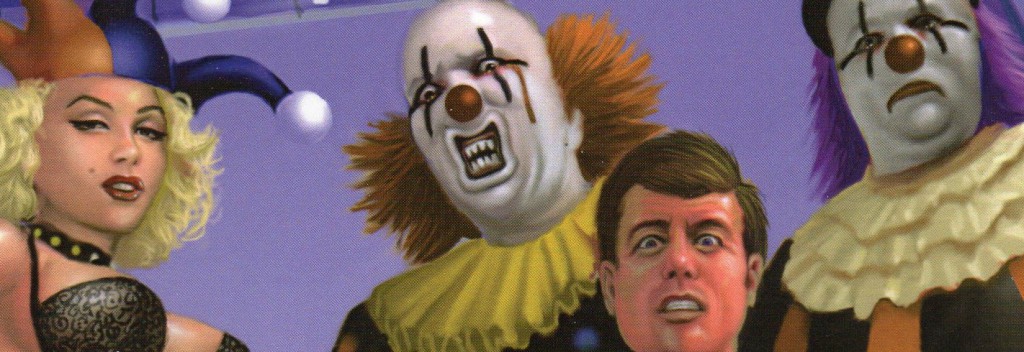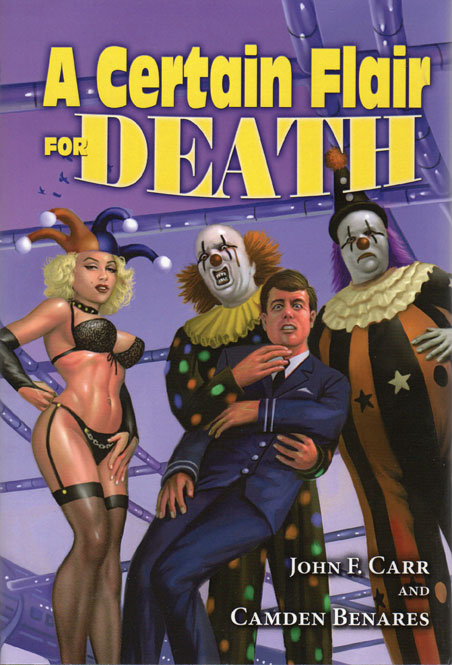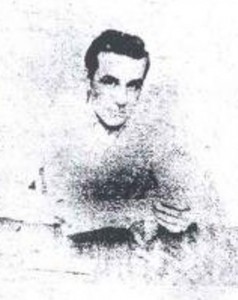
Or is it?
This strange saga began on July 8, 1967, when Mr. A. Edward Horsey (of 3330 Virginia Street, Kalamazoo, Michigan) contacted Special Agent V. Lemar Curran of the Detroit FBI Field Office. At this time, Horsey informed the Bureau of his involvement with a group of researchers who were trying to get to the bottom of the JFK assassination. According to Horsey, he and his associates had enlarged frames of the Zapruder film and discovered two men lurking on the Grassy Knoll immediately following the assassination, one of whom held a literal smoking gun that Horsey identified as a CIA operative named Al Grout, a name first connected to the JFK assassination by way of an extremely rare and obscure book entitled, The Plot to Kill JFK.
But that wasn’t all: Horsey had uncovered evidence (or so he said) that another CIA agent named Bill Medina had recruited Lee Harvey Oswald in Mexico City, all part of a dastardly plot to set Oswald up as the assassination fall guy. Afterwards, the FBI checked with the CIA who denied employing any agents named Al Groat or Bill Medina. (But, of course, that’s what you’d expect ‘Them’ to say!)
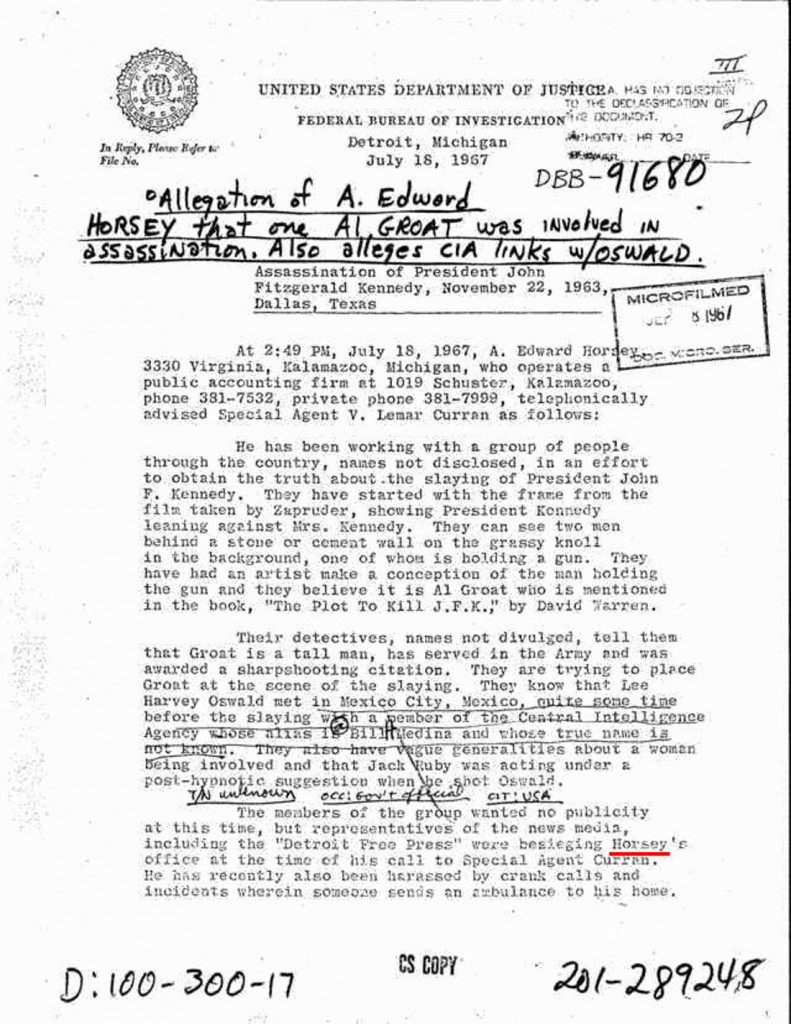
Around the time Horsey was sharing his conspiracy theory with the Feds, a book well known to assassination buffs was published called Were We Controlled?, authored by the pseudonymous “Lincoln Lawrence.” Were We Controlled? presented the scenario that Oswald was a sleeper agent (ala The Manchurian Candidate angle) mind controlled by a secret technology called Radio-Hypnotic Intracerebral Control (R.H.I.C.) and Electronic Dissolution of Memory (E.D.O.M.)
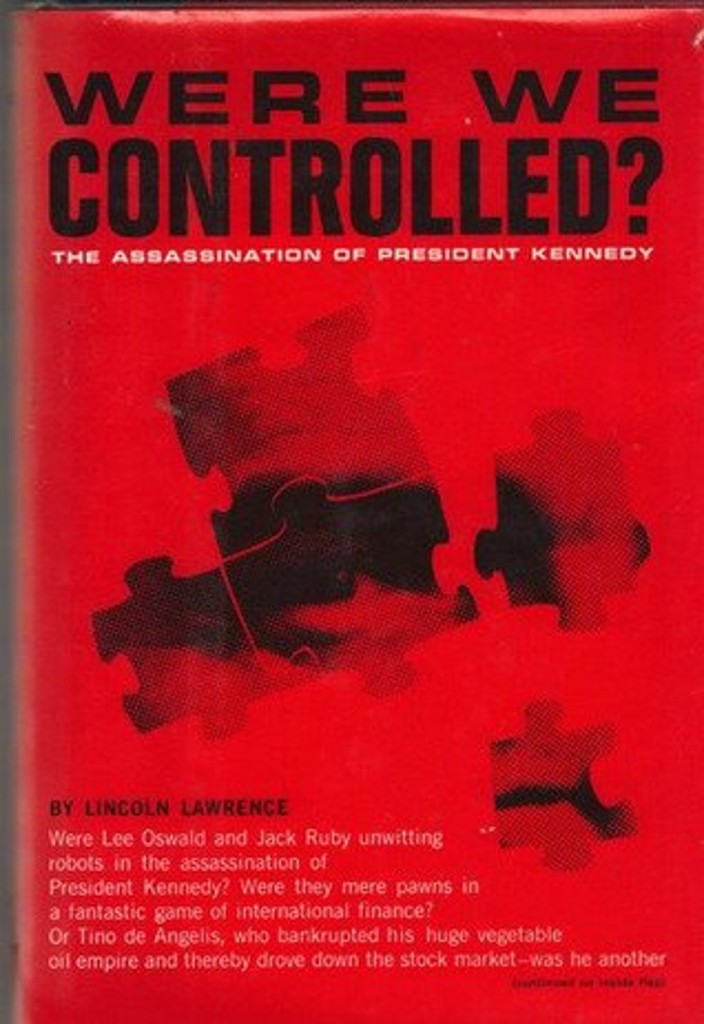
Download here courtesy of the Historia Discordia Team.
Lawrence described R.H.I.C. as the “application of post-hypnotic-suggestion triggered at will by radio transmission. It is a recurring hypnotic state, re-induced automatically at intervals by the same radio control. An individual is placed under hypnosis. This can be done either with his knowledge—or without it by use of narco-hypnosis, which can be brought into play under many guises. He is then programmed to perform certain actions and maintain certain attitudes upon radio signal… an R.H.I.C. controlled person can be processed as Oswald was in Minsk, allowed to travel to any country… and be put to use years later by the application of RHIC controls. In short, like the toy, he can in a sense be ‘wound up’ and made to perform acts without any possibility of the controller being detected… He can be made to perform acts that he will have no memory of ever having carried out. In a manipulated kind of kamikaze operation where the life of the ‘sleeper’ is dispensable, R.H.I.C. processing makes him particularly valuable because if he is detected and caught before he performs the act specified… nothing he says will implicate the group or government which processed and controlled him.”
As for E.D.O.M., “it enables man to juggle with other men’s sense of time… through the use of radio-waves and ultra-sonic signal tones…. It in effect blocks memory of the moment.” According to Were We Controlled?, E.D.O.M. was employed to erase from Oswald’s brain the identities of the assassination conspirators. However, this shadowy group (referred to in Were We Controlled? as—you guessed it—“The Group”) didn’t want to take any chances, so as an extra precaution they brought in another patsy and did the same RHIC-EDOM number on his head. In this second instance, Jack Ruby was mind controlled to kill Oswald.
As for “Lincoln Lawrence”—the pseudonymous author of Were We Controlled? who was “working in liaison with the department of defense”—he was later revealed to be a New York media personality named Art Ford, most well known for his 1950’s television show Art Ford’s Jazz Party.
In 1976, assassination researcher Dick Russell met Art Ford in the NYC offices of Circus magazine. Russell described Ford as a “prominent radio announcer and longtime student of parapsychology with many connections in the publishing world.” However, publisher and UFO scene maker Tim Beckley informed me that Ford’s star had been pretty much faded by the mid-70s and at that time he was eeking out a living writing for Circus, having been relegated to a converted broom closet as his “office.” One of the circumstances that contributed to Ford’s tarnished falling star status was his involvement in the payola scandal of the early-60s.
Beckley recalled that around the time Were We Controlled? was released, Ford was trying to get him interested in a manuscript, but Beckley found Ford a bit too pushy and steered clear. As for Ford’s parapsychology interests, he was part of the Long John Nebel/UFO scene in New York during the 50s and 60s and appeared as a guest speaker at the Big UFO Show there in 1967. During his presentation, Ford claimed to have discovered an ET ray gun at the North Pole that was 100,000 years old! However—to those who had a chance to catch a glimpse of this weapon (such as Beckley)—it looked like a toy gun. During this same period, Ford produced an obscure and now impossible to find film on the Bermuda Triangle.
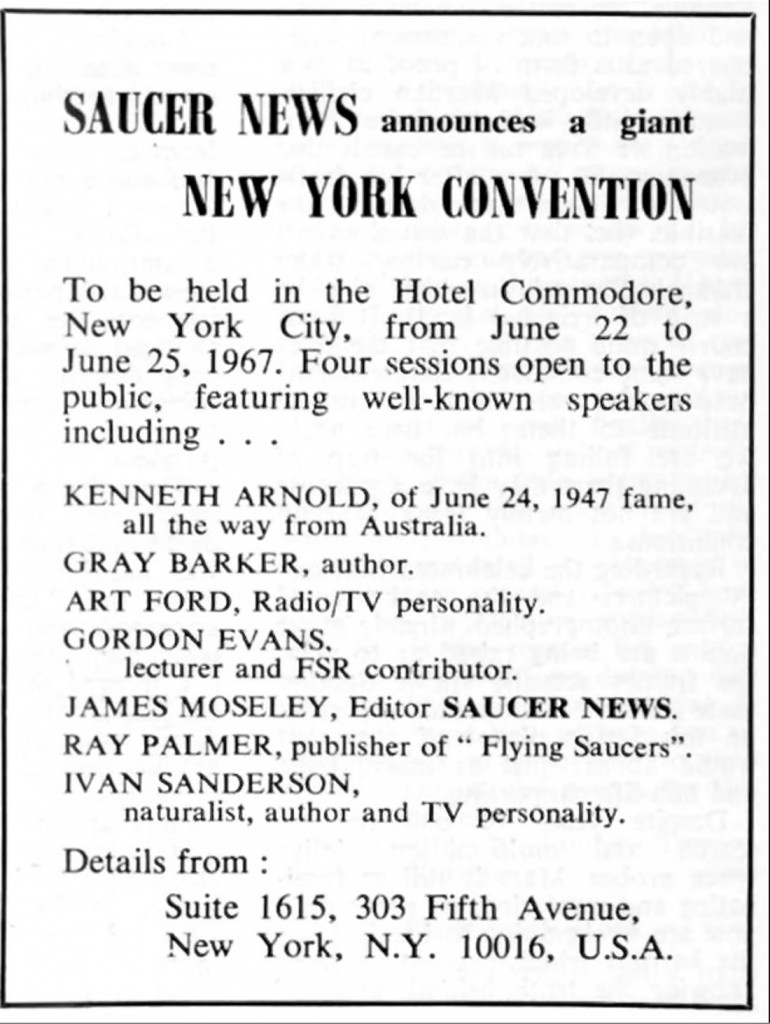
During their meeting, Ford told Dick Russell that the source for Were We Controlled? was an “intelligence insider” who passed info to him through a middle man, a New York Attorney named Martin J. Schieman, who was most noted for his representation of Mad Magazine in a precedent setting case, Berlin v. E.C. Publications, Inc., which established that parody does not infringe on copyright.
Around the time of the publication of We’re We Controlled?, Schieman was discovered in his office at the Time-Life building with a gun beside him and a bullet through his head, the result of an apparent suicide. However, Ford intimated that Schieman’s death was probably no coincidence and that Ford feared for his own life as well.
“I never met Lawrence,” Ford told [Russell]. “Whoever he was, he was very clever. He covered himself well. The only reason I am sure the man actually existed is, I got a telegram from him and then he managed to reach me by phone. I received payment, in cash, for helping him research his book. The research I did all went to a certain mail drop and was picked up. When he first contacted me, he told me to look into mind control techniques….”
In the introduction to We’re We Controlled?, “Lincoln Lawrence” cites another book which he claimed held the ultimate answer to the JFK assassination:
“We were told quite flatly that there was in existence a report that named three men who concocted a diabolical plot to kill JFK. It was supposed to be fifty-eight pages in length and was circulating in Chicago. We thought that this was a slim lead, but decided that we must find it and read it.
“In view of the fact that we devoted most of our waking hours for three years to this investigation, perhaps it isn’t surprising that we did indeed find that ‘report!’
“Its author, David M. Warren, refers to it as an ‘explosive documentary novel.’ In the early pages appears the claim that it ‘blows the lid off the secrecy surrounding the facts of Kennedy’s assassination.’
“Mr. Warren begins his strange story with these words: ‘Contrary to the findings of the FBI and the Presidential Investigating Commission, there was a plot behind the senseless slaying of President John F. Kennedy…. The killing was not the work of a lone assassin as most people have been led to believe…. A private investigating firm located in New York City have in their possession documented evidence which backs up the charge.
“Mr. Warren’s cast of characters includes two directors of the plot and a third person who was the key man in the plot. The fatal shot was fired by a marksman other than Lee Oswald, and Oswald was merely a dupe used by the key man.
“This odd document ends with a strange statement. In the beginning of his narrative, Warren writes, ‘Part of the mass of evidence unearthed by the private investigators included a diary, a small black book that contained, in shorthand, a detailed account of the plot to assassinate the President…”
Although “Lincoln Lawrence” identified the author of the above mentioned “report” as David M. Warren, for some strange reason he neglected to provide the actual the title of the book—or even the publisher’s name—but simply gave their address as 2715 North Pulaski Road, Chicago, IL. The title of this “explosive documentary novel” it turns out—drum roll please—was The Plot to Kill JFK.
This is where the Discordian connections first come into play. The Chicago publisher mentioned by Lincoln Lawrence happened to be Novel Books, the very same outfit that published Kerry Thornley’s Oswald. Both Oswald and The Plot to Kill JFK hit the shelves in 1965, two of the earliest JFK assassination themed books. Thornley’s editor at Novel Books was a young lady named Louise Lacey who established a friendship with Kerry and would later be ordained as a Discordian Pope. She’s also a good friend of mine!
Among the rarest of JFK assassination tomes, The Plot to Kill JFK was actually a two-fer—two-paperback-books-in-one—a gimmick publishers used back in the day to market novellas that we’re long enough for a regular sized title. The other book combined with The Plot to Kill JFK was a lusty romance yarn provocatively titled Summer of Want by Jenmary Cady. (Don’t worry, this all will come together shortly… sort of.)
The Plot to Kill JFK featured Al Groat as the trigger man in the caper, the same shadowy individual that A. Edward Horsey had claimed was a CIA agent and part of a Dealey Plaza assassination hit team. Also featured in the book was another supposed CIA agent (that Horsey also identified to the FBI) named Bill Medina.
The Plot to Kill JFK was authored under the apparent pseudonym “David M. Warren” and is considered among the rarest of JFK assassination conspiracy books. In fact—when I first started traveling down this odd avenue—there were zero copies available anywhere on the Net, and one of the few existing copies was located in the special collections at the University of Oregon, part of the personal library of Linus Pauling donated after his death. Not unlike Art Ford, Pauling was a man of many interests, among them the JFK assassination and UFOs!
Unfortunately, The Plot to Kill JFK was unavailable for interlibrary loan, and so on the remote chance that maybe I could connive them into making me a scan, I contacted the U of O Library and was informed that The Plot to Kill JFK had just recently been scanned into their system. and boom, the next thing I knew it landed in my dropbox! Once downloaded into my hot little conspiratorial hands, I immediately dove into The Plot to Kill JFK to get to the bottom of this whole JFK assassination thing.
The Plot to Kill JFK goes something like this: During the McCarthy commie scare era, this industrialist dude named Silas Proctor hired this other guy named Judson P. Starkey who ran an investigative firm with its main function being to flush out commies from private businesses. And so Proctor and this Starkey dude became associates, and after the Red Scare pretty much petered out, Starkey turned his investigation firm into an organization called the America First Society. The America First Society (as the name suggests) wanted to Make America Great Again by not only busting out a can of whoop ass on any commies they came across, but also put minorities in their place and that whole bit, kind of like the KKK meets the John Birch Society with a bit of fascism throw in for good measure.
In a nutshell, Proctor and Starkey were pissed at JFK because they saw him as a globalist do-gooder who loved the coloreds and was in bed with the Reds, so they decided a Dallas dust-up was in order and got this Al Groat guy who had been a sharpshooter in the military to do the dirty work.
The Bill Media character in the book is Oswald’s handler who gets him a job at the Texas School Book Depository under the pretense that he’s recruiting Oswald to be a CIA agent there to prevent JFK’s assassination, when in reality, they were setting-up patsy Oswald to take the blame for the crime of the century!
So that’s the basic premise of The Plot to Kill JFK, and while the book is very rare, I think my description will save you the time of actually reading it, because—in my estimation—it’s pretty cornball. However, if you do want to read it, I’ve uploaded a copy here for your possible reading enjoyment!
If you’ve been crazy enough to follow me this far, here’s where things start to link up to Discordia, and in particular Kerry Thornley and the Garrison Investigation. In December 1967, Harold Weisberg (the main thorn in Thornley’s side in relation to Garrison’s investigation) received a letter from a St. Petersburg, Florida housewife name Helen Hartmann. In her letter, Hartmann describes how she just recently caught the JFK assassination conspiracy bug and heaps lavish praise on Weisberg as being one of the key researchers who opened her eyes to the Warren Report “Whitewash.”
Hartmann also mentioned a St. Petersburg radio show on WLCY-AM hosted by a fellow named Bob Ruark who, in her opinion, was doing important work interviewing different researchers on the JFK assassination beat. To keep him in the loop, Hartmann started transcribing some of these interviews for Weisberg. In a January 17, 1968 letter, Hartmann included a rough transcript of a Florida TV interview with Kerry Thornley, and in this same letter, curiously enough, she asked Weisberg what he knew about Lincoln Lawrence of Were We Controlled? fame, and then goes on to write:
“I heard him [Lawrence] one night on a northern radio station and almost thought I could identify the voice but, unfortunately, conditions were such that the station kept fading away and I could not hear enough of it to be positive. His book is one of those suspected of being subsidized by some agency of the government, as I wrote in my first letter—writing of the possibility of some books being subsidized. In his case, it would have been because he presented such a far-out theory that all other critics would be made to appear ridiculous as well…”
Bear in mind that at the time of its publication, Were We Controlled? was very obscure and went virtually unnoticed, and those who did notice thought it was some sort of disinformation or pseudo science fiction. In the mainstream of JFK assassination research, Were We Controlled? was pretty much dismissed and really didn’t get talked much about until a decade or so later when the likes of Mae Brussell started name dropping it. By the time remote distance mind control started being talked about in the conspiracy research circles of the late 1980s, many were pointing to Were We Controlled? as one of the first books to explore the topic.
Hartmann’s correspondence to Weisberg ran over the course of a year-and-a-half and was quite detailed. She was obviously a hardcore researcher and went into a lot of minutiae back-and-forth regarding the assassination and different evidence that pointed toward a conspiracy. In some of her letters, Hartmann mentioned meeting a researcher named A. Edward Horsey.
In a December 17, 1968 letter to Hartmann, Weisberg writes:
“…There were some strange doings. First a man identifying himself as Horsey called me at home about Thornley and himself, beginning by saying [Thornley] had clobbered me on TV and perhaps should not have. He called me several more times in N.O. [New Orleans], or someone did, the last time leaving a message. When I called back the woman who answered the phone said he’d moved, leaving no forwarding address, about three days earlier—before this call was placed. Meanwhile, he or someone else had phoned my home, found where I was staying, and phoned there. The one who phoned there was impolite, identified himself as Thornley, and declared the alleged intention of ‘getting to the bottom of this.’ Now the man with whom I stayed in N.O. knows something of the story and asked for a number to which I could return the call. The caller refused to give it… Can you explain Horsey to me? This strange behavior?…. How did he get in all this, meet you, etc?… It looks strange…”
In a December 23 response to Weisberg, Hartmann starts her letter saying, “I am a little frightened by all that has been taking place here is to understate. I will start at the beginning and see if I can put things in some kind of order then some sort of picture may emerge…
What proceeds from there is a chaotic (Hail Eris) nine page account detailing her odd interactions with A. Edward Horsey who Hartmann became aware of through a local TV and a radio program Horsey appeared on in early September in which he stated ‘that he was in this area doing some investigations and that he would be leaving to return to Kalamazoo very shortly… A couple weeks later I received a phone call from him and he asked to visit me to talk about the investigation. He said he had been given my name and phone number by a man who lives near where he was staying….”
Soon after, Horsey paid Hartmann a visit and explained that he was involved with a loose knit group of researchers that included Josiah Thompson, author of Six Seconds in Dallas, and noted that: “This ‘group’ had arranged to receive all mail at an address in Houston, Texas in the name of Dr. John Smith.” Horsey mentioned they were using this mail drop because he and his associates had been threatened and harassed by those who wanted to shut down their investigation so they had to keep everything very hush-hush. Horsey also mentioned that he was trying to track down Kerry Thornley (during this period Kerry lived in Tampa.) At a later date, Horsey informed Hartmann that he’d indeed met up with Thornley and was trying to help him with his pending case in the Garrison Investigation.
Hartmann’s letter goes into exhaustive detail concerning the crazy intrigue surrounding Horsey’s visit to St. Petersburg, which you can read here.
The letter includes death threats (from anonymous sources) against both Horsey and Hartmann, all of this on account of Horsey’s claim he had solved the JFK assassination. Throughout the letter, Thornley played a prominent role in Horsey’s “investigation” and communications with other researchers in the field—like Vincent Salandria and Sylvia Meagher—seemed to suggest that Thornley was somehow throwing a monkey wrench into everything and, due to these antics, getting other researchers mad at Horsey. Or at least this is how Horsey portrayed the situation. If the intent of Hartmann’s rambling letter was to confuse the hell out of Weisberg, it no doubt succeeded.
In a letter dated 12/27/68, Weisberg shared this bombshell: “When [JFK assassination researcher] Gary Schoener told me that the call Vincent Salandria was deliberately led to believe was from David Lifton, in which he was asked to undertake Thornley’s defense, was really from Ed Horsey…” which clued Weisberg into the reality that Horsey was most likely spreading disinformation.
On account of these shenanigans, Weisberg decided to call Kerry Thornley to see what the hell was going on with this Horsey character, and Kerry told Weisberg that “He apparently had heard this call was by Horsey, not Lifton. He denied making any of the calls to me, or those to Sylvia Meagher [that] Horsey told me he [Thornley] had made and presumably charged to his phone….”
Confused yet?
In subsequent letters, Hartmann informed Weisberg (and other correspondents) that she was now on to Horsey’s game and that he was “poison.” And yes, it was true that Horsey had been placing phony phone calls pretending to be other researchers and doing remarkably good vocal imitations of them, thereby gaining access to information while at the same time spreading disinfo and turning other researchers against each other.
In January 1969—as these curious Horsey revelations were coming to light—the Weisberg/Hartmann correspondence apparently ceased around the same time that Horsey also seems to have fallen off the map.
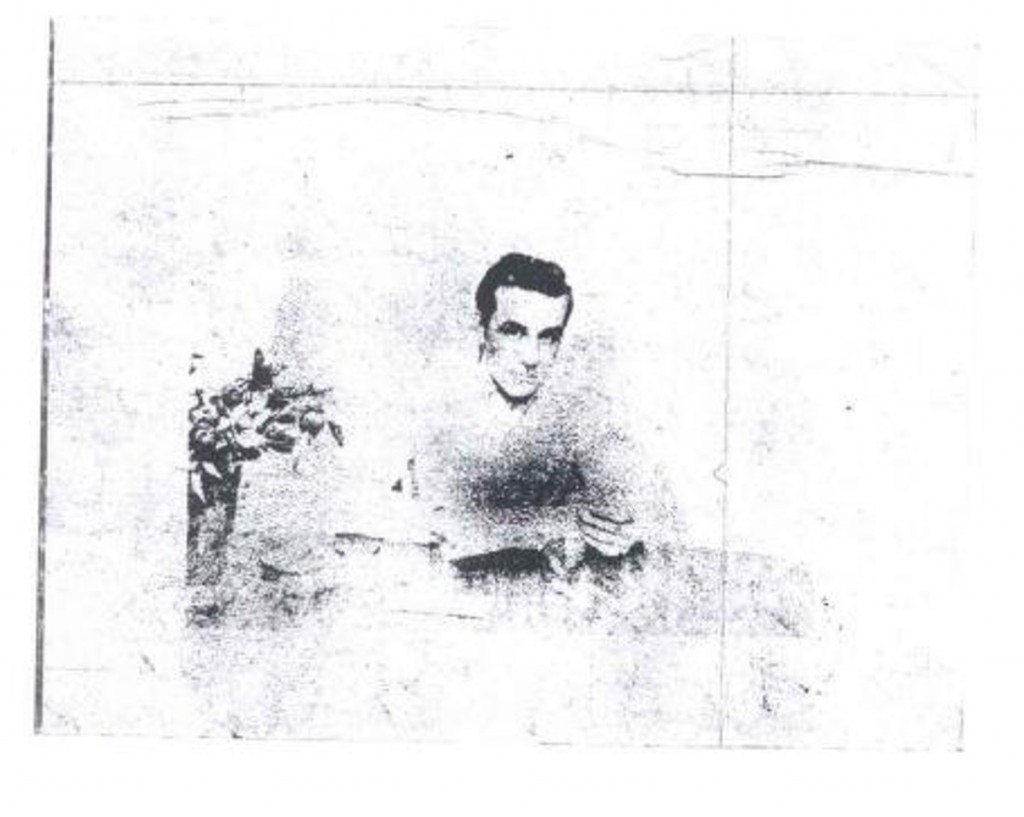
Courtesy of the Harold Weisberg Archives.
A few years back—when I first stumbled on the Hartmann/Weisberg correspondence—I didn’t know quite what to make of it all, as Horsey seemed like just one among the many sketchy characters that associated themselves with the Garrison Investigation. Then—a couple years ago—I was contacted by a quite well known conspiracy researcher of the 1990s (now retired) who had mysteriously disappeared from the scene toward the end of that decade. Anyway, this “retired” conspiracy researcher (we’ll call him Commander X) re-emerged from the shadows, albeit briefly, to alert me to Horsey’s connection to The Plot to Kill JFK and quite possibly Were We Controlled? To this end, Commander X voiced his suspicion that the author of both books might very well have been A. Edward Horsey, a theory that indeed makes a certain amount of sense.
Let’s look at the Were We Controlled?/The Plot to Kill JFK parallels. The narrative of both books, although non-fiction, are presented in a novelized form and read like fictional accounts in terms of action and dialogue. Both books feature a shadowy group of conspirators consisting of industrialists and businessmen with right wing affiliations and intelligence agency connections.
The Plot to Kill JFK conspirators were motivated to kill President Kennedy not only because they felt he was soft on Communism, but that he would be bad for big business; whereas the assassination plot in Were We Controlled? was designed to manipulate the New York Stock Exchange and allow the conspirators to profit from their foreknowledge of JFK’s death. In both scenarios, Oswald was set up as the patsy.
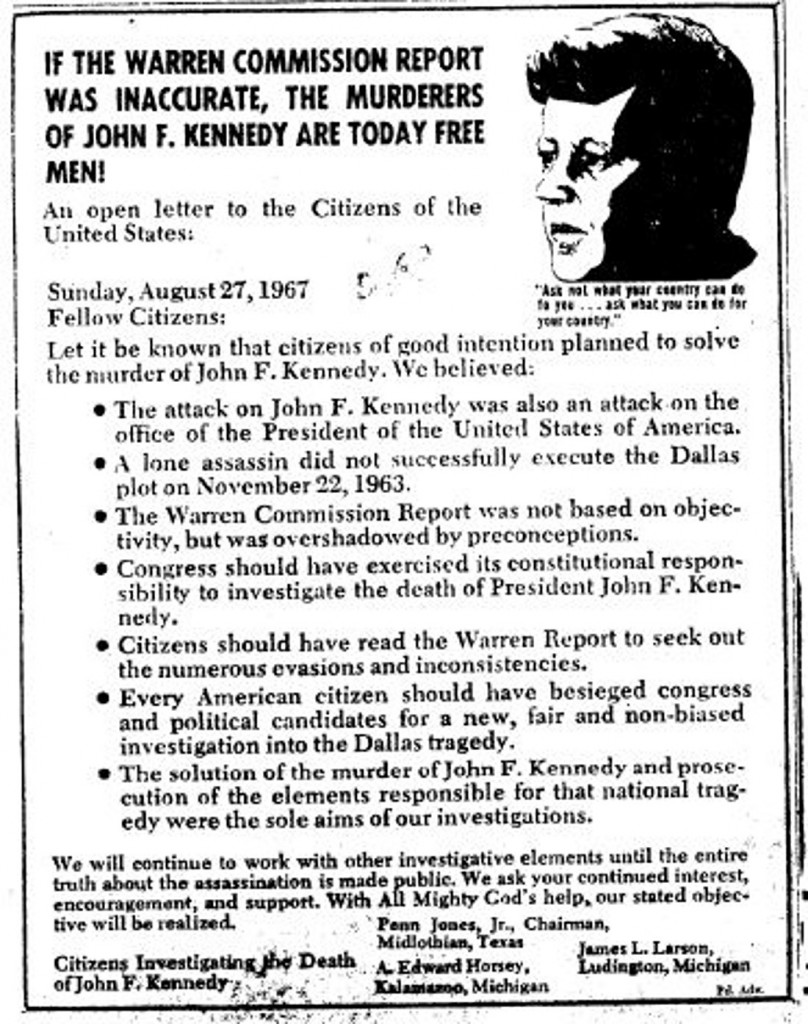
'The Citizens Investigating the Death of John F. Kennedy.'
When Horsey talked to the FBI, he informed them that Jack Ruby had been acting under a post-hypnotic command when he shot Oswald, which was the exact plotline featured in Were We Controlled? Horsey claimed he’d been harassed and threatened. Similarly, Art Ford aired his suspicions that attorney Martin Schieman had been murdered due to the publication of Were We Controlled? and that Ford said he feared for his life, as well.
Commander X also suspected that Horsey may have been a closet Discordian and that he and Thornley were working in cahoots (ala Operation Mindfuck) to disrupt and spread disinfo among JFK assassination researchers. In response to Commander X, I pooh-poohed this idea, noting that in the hundreds of letters—and reams of Thornley/Garrison Investigation materials I’ve reviewed—not once had I ever come across any communications between Thornley and Horsey or any mention of Horsey by Thornley and I seriously doubt the two ever met. Commander X was also suspicious because Thornley’s book Oswald had been published by the same outfit—Novel Books—that was responsible for The Plot to Kill JFK, hence the possibility there might have been some sort of nefarious link between the two.
Goddess only knows…
But get this: I’m now fairly certain that it was actually Horsey who penned the “Helen Hartmann” letters! The Hartmann/Weisberg correspondence ended around the same time Horsey dropped off the map, and Hartmann—as far as I can tell—was the only one who met Horsey in the flesh or talked to him at any length. A lot of researchers got crazy phone calls from the guy, but no one ever seems to have actually met Horsey.
Although Horsey claimed he was living in Kalamazoo at the time of his St. Petersburg “investigation,” I suspect Kalamazoo was also a snow-job and that he was actually living in St. Petersburg the whole time. In addition, it seems that Horsey fed the FBI a line of BS (which is a crazy thing to do) about living in Kalamazoo, along with all the other bogus information he passed along.
So who the hell is/was A. Edward Horsey? An online search conducted in 2014 indicated that A. Edward Horsey (aka Aubrey Ted Horsey, aka A.E. Ted Horsey, aka Aubrey E. Horsey) was still alive (now in his mid-70s) in St. Petersburg, Florida. Further Internet sleuthing revealed that “A.E. Ted Horsey” was listed as the director of two religious organizations located in Florida.
When I entered the addresses of Horsey’s “churches” into Google Earth Street View, I discovered a couple of normal, though dumpy looking suburban homes, giving the impression that Horsey and his religious affiliations were some sort of scam. At one time, Horsey was using the email address of ahorsey@aol.com, so a couple years back I tried to send him some fan mail there but it bounced back—but who the hell uses AOL anymore?
During a recent online search, I found a link indicating that Horsey had passed on (in 2007) to that big JFK Assassination in the Sky. This news came as a bit of a head scratcher because when I first conducted online searches for Horsey a couple years back all indications seemed to suggest he still alive. Now I don’t know what to think.
If anyone has further intel on the mysterious A. Edward Horsey, please contact us here at Historia Discordia headquarters STAT!
Download the Horsey Files here:
https://drive.google.com/file/d/0B5FuqteOcgejVU9OcTV2NUxQR3c/view?usp=sharing
https://www.corporationwiki.com/Florida/Gulfport/horsey-a-edward-413429.aspx
